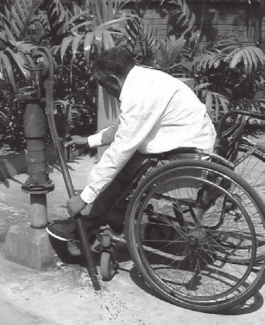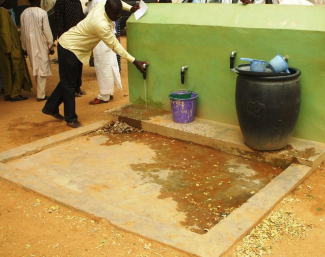Handpump

At the water point, any user should be able to operate the water drawing mechanism and to collect water. A handpump can easily be made accessible through some adaptations:
- The handpump should be sited close to the edge of apron, in order to be reachable from outside apron;
- Minimise difference in apron height to enable wheelchairs to wheel into the apron if necessary;
- If the apron is built in concrete, it should be roughened to avoid being slippery when wet (slippery floor can be prevented via a good drainage slope).
Concerning the water point location, keep in mind to plan for a suitable safe accessible location for the pump, either for women and men with or without disabilities.

Then, several handmade equipment for a handpump would facilitate its use.
Lengthening the pump handle up to 105 cm will provide more leverage and make the use easier (see different examples below).

Install the pump at a height from which the handle can be reached from a wheelchair, or nearer the ground level, as shown in the picture below.

Install the spout and pump handle at 90 degrees to each other. This allows the user to pump water and hold the container at the same time.